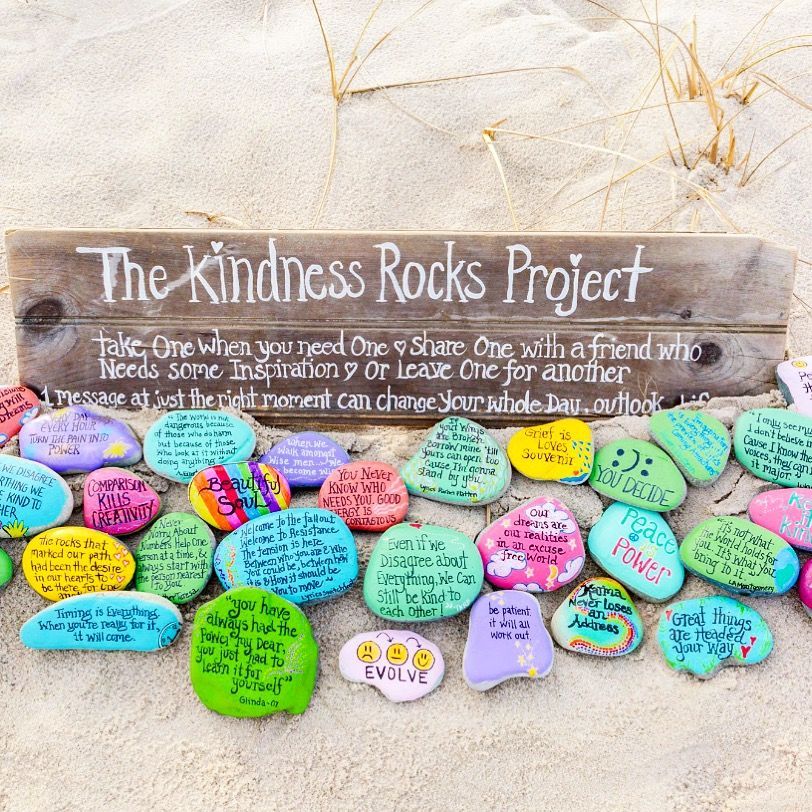Enjoying Outside, Inside - The Kindness Rock Project

The Kindness Rock Project began in 2015 after the creator, Megan Murphy, parents passed away. She was young, only in her twenties, when they passed and she began having internal conversations with them. She began finding heart-shaped rocks that they believed were her dad’s response to her questions and a piece of sea glass was a response from her mother. As she walked along the beach, she started seeing people with the same expressions on their faces that she had as she thought deeply about her parents. She started realizing that she maybe wasn’t alone in her emotions. On her way out of the door one day she randomly picked up a Sharpie marker that was on the counter. As she walked along the beach, she picked up rocks and began writing encouraging messages on them for others to find. The first day she dropped only five rocks along the beach that housed millions of rocks. That night she got a message from a friend that had happened to find one of her rocks. Megan didn’t know for certain that her friend knew it was a rock that she had decorated but she had a good feeling that she probably recognized her handwriting. Wanting to remain anonymous, she denied dropping the rock and the friend told her that she had been having a rough day and the message on the rock was received at just the right time. Megan says that’s the absolute moment that the project started.
Have you ever been lucky enough to come across a rock that has been painted with a cheerful message, pretty flower or happy character? If so, have you wondered what they mean and where do they come from? The rocks are simply meant to make their finders smile and brighten their day! Sometimes the rocks are painted by experienced artists and sometimes they’re painted by a little kiddo. You can keep it to continue making you smile or re-hide it and brighten someone else’s day.
The Kindness Rock Project website offers more information on how to paint the rocks, what type of paint to use, lettering tips and more. They show you how to create a rock garden where people can come and choose a rock that speaks to them on that particular day. The website offers tips on where to find rocks, where to get quotes and how to paint and seal the rocks. You can even do a larger group event and have many people painting the rocks together.
If you’d like to start a group in your own community to connect with other kind souls locally, you can add your group’s information to the Kindness Rock Project registration page. That will help others in your community find your group and participate. You can add your own twist by adding scavenger hunts, hide and seek or a memorial for a loved one that has passed away. If you email your information to the program, they will share your group and photos on their website.
The Kindness Rock Project began as an idea to brighten the days of many. The group also practices the seven principles and guidelines of Leave No Trace policies and urges their participants to be mindful and respectful of others as well as being kind to the environment by not placing rocks in places that will undo the good intentions you intended. They ask people to never leave rocks in National Parks, hiking trails, businesses or other places without their permission.
If you happen to find a painted rock, you can be sure it was painted with care and love from someone you probably don’t even know!
-Kristie Ehrhardt; kehrhardt@tuleyome.org
Tuleyome Land Conservation Program Manager
RECENT ARTICLES






